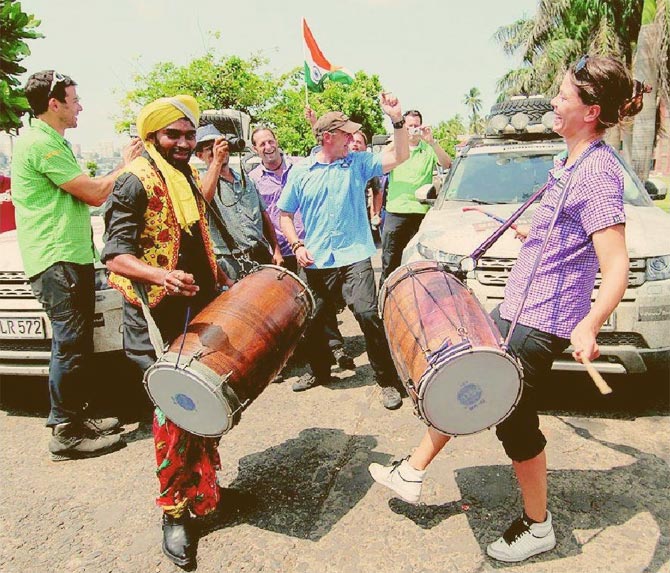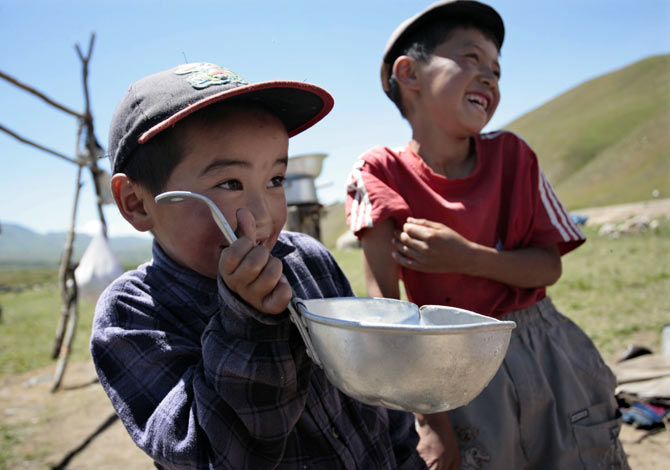
If you are planning on a 4000-mile ride, as the Silk Road riders did, you should heed their expert tips.
Fifty-three days on the road, via 13 countries starting from the United Kingdom and Germany to India, is a long way to travel "for curry". But Dag Rogge, who led one of two expedition teams that undertook this journey, is only joking about their intention.
The real kick in launching the expedition for Rogge, the German head of Land Rover Experience, and compatriot Hans Hermann Ruthe was to follow parts of the 4,000-mile Silk Road, the ancient trade passage that connected Asia with the Mediterranean.
The duo were camping in Bolivia when they were hit by the idea. Jaguar Land Rover, eager to test the endurance limits of its luxury SUV models, Range Rover Evoque and the new Hybrid, agreed to step in with vehicles and funding.
After two years of intensive planning, 18 cars set off from Solihull, UK, and Berlin, Germany, driving for as long as 12-14 hours on some days. The trip ended at Marine Lines in Mumbai, home city of Land Rover's parent Tata, where they were welcomed with tilaks and garlands by bhangra drummers and amused onlookers.
After their drive, Rogge and Ruthe advise on the requisites for successful inter-continental drive.
...

1. Paperwork
All passports, visas and permissions from authorities of the various countries need to be sorted beforehand. However, immaculate paperwork does not mean everything will go as planned.
Between Ukraine and Russia, no man's land is actually water, says Rogge. While the convoy queued up at the border crossing there, the papers somehow drifted into the water and had to be frantically rescued.
It is not unusual, Rogge also learned in Kyrgyzstan, to encounter border officials who will insist your documents do not pass muster until you part with a bribe.

2. Logistics
Study varying driving rules and make a note of holidays in different countries. Public holidays cost Ruthe's team three days in China as papers could not be processed.
Some SUVs, laden with first-aid and other supplies, can weigh as much as four tonnes so practise driving with heavy loads.
To avoid communication gaps and loss of time, it is essential to have a local contact in every country you drive through. But during the course of the journey, Ruthe also discovered that "people are friendlier than you expect. So if you have any problem, engage with them."

3. Breathing easy
Artificial breathing mechanisms such as oxygen tanks and masks will come in handy. One of the most useful pieces of equipment for the convoys was a portable altitude chamber.
The bag-like chamber could simulate lower altitudes -- bringing down heights of 4,500-4,800 metres to about 2,100 metres -- allowing the patient's body functions to return to normal.
However, these bags are priced steeply at approximately $2,500 (Rs 1.5 lakh).

4. Gear and gadgets
Gas stations in Uzbekistan were running low on diesel so the teams had no option but to purchase it in the black market. Fuel funnels, which help separate water, dirt and debris from various fuels proved crucial at this time.
They also advise carrying strong ropes and sand ladders which can bail drivers out of sticky situations during heavy rain or landslides.
For tracking their progress and communicating with local contacts, the teams had a 24-hour satellite Internet connection.
However, since satellite phones are not allowed without special permission in India, they switched to local SIM cards on arriving here.

5. Fitness and diet
Participants in the expedition were briefed to take necessary vaccinations. When travelling in larger groups, Ruthe advises including a trained paramedic or doctor in the team.
Health is of utmost value. At times when the food sold along the highway did not inspire confidence, as happened in parts of China, the teams relied on the 400 packets of Travellunch, or dehydrated camping meals, they had carried.
With inverters, the trail teams converted 12 volts to 220 volts and used electric kettles to boil water for coffee, tea and ready meals.
They bought fresh fruits and bread whenever and wherever they had the chance.